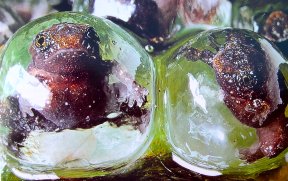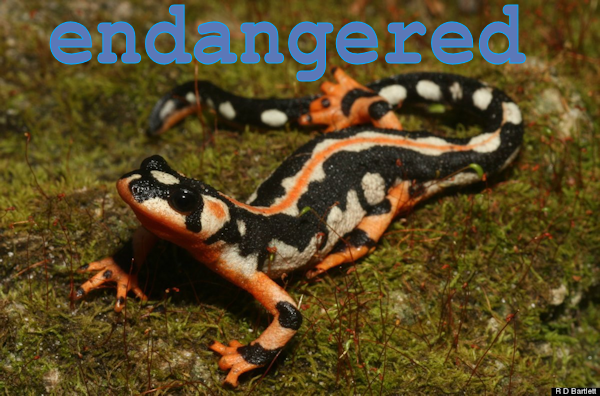Frog Glossary D
Daphnia: Daphnia (also called water fleas) are tiny,
small animals that make up a group of freshwater free-floating plankton. They are
useful for feeding tiny carnivorous tadpoles and African dwarf frogs. For more information
on daphnia and their life cycle, see
Daphnia.
 Dendrobatid: A Poison-Arrow, or Dart frog.
Sometimes called the "torrent" frog.
Dendrobatid: A Poison-Arrow, or Dart frog.
Sometimes called the "torrent" frog.
Deposition: As used with amphibians, the act or
process of depositing eggs.
Deposition site: The place or spot chosen by the
female amphibian to lay the eggs.
Detritus: A gathered collection of used waste materials
that have combined together, sometimes on a cellular level that have become visible.
Dichromatic: Exhibiting two different color phases within one
species; often a sex-linked characteristic.
Diflucan: Diflucan, or Fluconazole is an antifungal
medication.
It is used to treat yeast infections of the mouth, throat, and esophagus;
and fungal infections throughout the whole body and in the blood. Fluconazole is
also used to prevent fungal infections from occurring in people with suppressed
immune systems such as cancer-chemotherapy patients, organ transplant patients,
and AIDS patients. It has recently been used by Herpers for curatives with their pets.
Digene: A group of parasitic flukes or flatworms whose first stage of development infects snails. At the second stage of it's life it is endoparasitic in vetebrates and usually reproduces sexually. Vetebrates of all classes except cyclostomata are used as hosts.
Dimorphism: The occurrence of two forms distinct in
build and/or coloration or sex among animals of the same species; often sex-linked.
 Direct Development: The tadpoles metamorphose
within the egg capsule and have no free-swimming aquatic stage. This means that
they are never tadpoles that swim in water, rather they stay in the egg and fully develop.
An example would be froglets of the species type Eleutherodactylus. (See picture above)
Direct Development: The tadpoles metamorphose
within the egg capsule and have no free-swimming aquatic stage. This means that
they are never tadpoles that swim in water, rather they stay in the egg and fully develop.
An example would be froglets of the species type Eleutherodactylus. (See picture above)
Dissection
To cut open and examine the internal organs, flesh and organs of an animal. For a cool
virtual frog dissection, see
Froguts.com.
Then click on "demo", found
in top right corner. After clicking "demos", choose frog, let it load and follow
the instructions.
Distilled Water: Water that is placed in a closed
system and allowed to evaporate. The evaporated water is then collected and called
'distilled'...as all of the impurities that may have been unseen in the water tank,
were left in tank (closed system) bottom and did not rise up with the water molecules
when evaporating.
Diurnal: Sleeps at night and is awake during the
day. Humans are an example of a diurnal animal.
The opposite of "diurnal" is 'nocturnal'.
Dorsum: Pertaining to the back or upper surface
of a frog or toad.
Dorsolateral: Pertaining to the upper sides of an animal.
Dorsolateral ridge: A glandular longitudinal ridge
on the upper sides of some frogs.
Dorsum: The upper surface of an animal.
Dysecdysis: The excessive sloughing off of the frogs' skin.
Frogs naturally shed and eat their skins. If done in excess, the frog can have an underlying problem.


